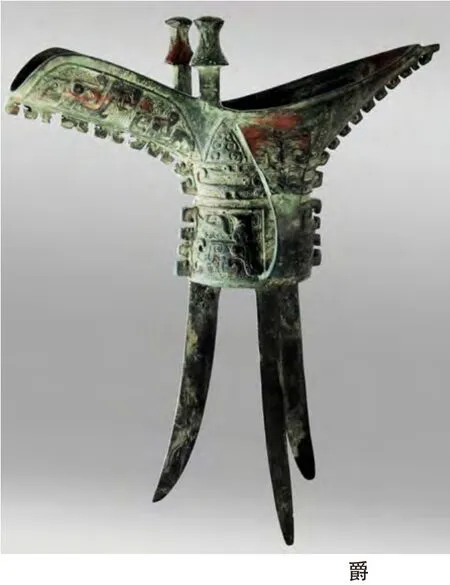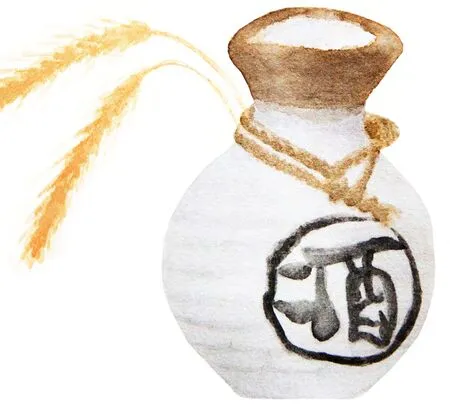The Great Spirit of Drinking
By Han Guangyue
There is always a funny show to watch at the end of each drinking party—the drunkards may be crying and screaming, or perhaps tumbling and vomiting their innards out.When they sober up and are asked about the taste of their drink of choice, they would probably tell you how bad it was. “The beer tastes like horse urine”; “red wine tastes like vinegar”; “western liquors all have a disgusting smell of herbal medicine” are perhaps some reports one would hear.Is baijiu (Chinese white ricebased spirits) any better? Nah,the burning throat is typically all I can remember—I feel bad about my stomach overstuffed with beer or red wine. The western liquors choke me, but baijiu is just too hot. They say those high-end Western spirits are good—Remy Martin, Château Lafite, Maota—but drinking them brings me little joy.
So, if you happen to witness this regretful way of drinking, you may say that Chinese people don’t know how to drink gracefully as westerners do, or that there is no such thing as “wine culture” in China. However, some essence of wine drinking does exist in the long history of the Chinese
每每酒局散场后,哭娘叫爹的、吐酒吐血的、摔跤撞车的,人生百态、悲喜滑稽尽情上演。待到过后问起他酒的滋味,多半回答啤酒像马尿,红酒像酒糟,洋酒像藿香正气水,白酒也就一个辣!再问喝酒的感觉,往往会说难受死了,啤酒撑得慌、红酒胀得慌、洋酒噎得慌、白酒辣得慌。人头马、XO、拉菲、百威、茅台,再好的酒也没喝出个滋味来,这种喝法真是既糟蹋了人又糟蹋了酒。因此,不少人说,中国人哪会喝酒啊?你看人家西方人,啤酒要冰,威士忌要加冰,喝红酒都要醒一醒,中国人就是牛饮,根本没有什么酒文化。
中国几千年的文明,怎么会没有文化呢?
无论是阅读古籍、参观博物馆,还是观赏古装戏剧电影,印象中除了梁山好汉之类的大块吃肉、大碗喝酒,好像古人饮酒大都文质彬彬,典型的如京剧里的人物,一手执爵,一手举袖,掩面而饮。酒器既美,酒礼亦繁,文化味十足。
酒器有大道。我们常说尊敬的某某,可知“尊敬的”是什么意思?尊,本是一种盛酒器,字里有个“酉”字,“酉”是酒的本字。尊的形制常常是圆或方足、圆或方腹,长颈敞口。在所有盛酒器里,尊属大中型,把尊盛得满满的给您喝,这就是用“尊”敬您。用“尊”敬你,你就是用尊敬的人,你就是尊敬的。再说那个“爵”,爵既是贵族阶层使用的酒具,又是封建贵族的封号,所以有词曰“加官晋爵”,用爵给你敬酒,就是对你加官晋爵的美好祝福。
但是,你可要注意了,当真有人用尊敬您的时候或者给您进爵的时候,您可不要一口气豪放地把那满尊满爵酒一饮而尽,那样不仅失礼,还很难看、很狼狈。你看那宽口大尊,满满的酒,掌握不好角度和力度,酒就不是饮到嘴里,而是会洒你满脸满身。你看那有着两个阙柱的爵,满满的酒,虽然没有尊大,没有尊盛的酒多,但如果你用力过猛,动作过大,阙柱就会伤到你的眉眼,所以那两个阙柱又叫拄眉。
圣人先贤制物作器,是非常讲究性用之理的,如此制尊作爵,用心也深。平宽大口、阙柱拄眉,就是为了让你饮酒时不疾不徐,让你不能过量,适可而止,这样饮起酒来才会恭敬如仪、温文尔雅。古人以器演道,不是虚言。如此饮酒,何止是一种文化,简直是一种文明.civilization.
When you read the Chinese ancient books, visit a museum,or watch a historical movie, you can see that most ancient Chinesefigures (except the outlaws) drink gracefully. For instance, a typical character in Beijing Opera would hold jue (an ancient wine vessel)in one of his hands to drink from it, and meanwhile raise another hand to hide his face with a long sleeve. Both the complicated etiquette and the beautiful wine vessel are parts of China’s unique drinking culture.
Profound meanings lie in the ancient wine vessels. The Chinese character for “respectable” or“distinguished” is “尊 (zūn),”which was originally a kind of wine vessel. (You can find in“ 尊 (zūn)” a “酉 (yǒu),” which originally means wine.) The vessel can be round or square,can have cylindrical or cuboidal legs, and can have a long or a wide bottleneck. No matter what its shape, a zun is generally big enough to contain a lot. To give somebody so much wine in such a big vessel is a symbol of respect.There is also another kind of wine vessel, the 爵 (jué), which is mentioned above. This vessel is smaller than zun, having three legs and two vertical sticks on its rim. The character 爵 (jué) has two meanings, the wine vessel used by the aristocratic stratum,and the rank of nobility. Therefore if somebody presents you a jue of wine, he means to wish you a promotion to a higher rank.


As a part of the drinking etiquette, the person who is given a zun or a jue full of wine should not ignore the wine in it. Failure to calculate the intersection angle between the diversely shaped zun and your mouth, especially with a wrong prediction of the vessel’s movement velocity would result in an embarrassing mess. As for jue, you need to be very careful to drink from it, otherwise the two sticks on the vessel’s rim could hurt your eyes. The pair of sticks are also called 拄 眉 (zhǔ méi),literally “eyebrow crutches,”which serves to keep a distance between the vessel and your eyebrows.
The ancient sages of China invented the wine vessels of such strange shapes with a purpose.You cannot drink from these vessels too quickly, so you will learn moderation. From the complicated etiquette you will learn to be gentle and patient. It is true that the simple ancient tools can show you the Way of things.This ancient way of drinking is not just a part of a culture. It reflects a philosophy of a great civilization.
Westerners often add ice to their alcohol, while many Chinese people like to heat traditional booze before drinking.Westerners think iced drinks have a better flavor, but Chinese people heat the wine for different reasons. Heating the wine can activate its healthful constituents,and the warm wine in your system can promote blood circulation in a better way. In the classic novel, The Story of the Stone,Xue Baochai told Jia Baoyu a similar theory. “Wine has an exceptionally fiery nature, and therefore must be drunk warm in order to be quickly digested. If it is drunk cold, it congeals inside the body.”

Zhang Zhan, a scholar who lived in 4th century, wrote in one of his works that, “Wine can be both beneficial and harmful… so moderate drinking is recommended.” In any case,moderation should be a key concern. Many Chinese agree that drinking 100 milliliters of baijiu daily is a standard of moderate drinking, but considering the individual differences, each person should adjust the standard according to their physical conditions.
Knowing the recommended methods and limits of drinking is only the basic level of Chinese wine culture. Not until you can think about life like Cao Cao (155–220,warlord and the penultimate Chancellor of the Eastern Han dynasty) did as he “drinks and sings,” or feel Du Fu(712–770,Tang poet)’s joy as he “companies the wine and sings in the sun”—not until you can understand Su Shi(1037–1101, Song poet)’s nostalgia as he “asks the heaven about the moon, holding the wine cup,” or Li Bai(701–762,Tang poet)’s loneliness as he “invites the moon along with his own shadow to drink,” can you truly understand the great spirit of the culture. (Translation: Wang Xiaoke)
西方人惯饮冰酒,而我们温酒烫酒,一是为了更好地激活其中的有效成分,二是为了饮用者的身体健康。酒性温辛,冷酒伤人肝。而热酒入喉,可以更好地发挥其辛散之性,快速地输布于人体全身,以收通利经络、舒筋活血之效,此乃顺酒之性而行保健养生之道也。《红楼梦》里,宝钗劝宝玉吃热酒,亦是如此,“酒性最热。若热吃下去,发散的就快;若冷吃下去,便凝结在内,以五脏去暖他,岂不受害”。
东晋学者张湛在《养生要集》中说,“酒者,能益人,亦能损人”“宜慎,无失节度”。
仅仅懂得饮酒之法还不够,这只是术数层面的东西,什么时候我们能饮出曹操的对酒当歌、杜甫的白日放歌、苏轼的把酒问青天、李白的举杯邀明月,我们或许才可以说,看见中国酒文化的大道了。

